1911-1942 The Sanborn Era
As observed elsewhere, seventy-five years elapsed between the beginning of classes (1875) and the
appearance of a Department of
Psychology separate from the Department of Philosophy (1950).
In contrast, by 1948 Columbia University had given 344 doctoral degrees in Psychology (Boring, 1950).
Even in Nashville, across 21st Avenue from Vanderbilt, a department of psychology had started,
and a psychology building erected, by 1915. A Peabody faculty member, Joseph Peterson was elected
president of the American Psychological Association (APA) in 1934.
Elsewhere in the South, by 1929 psychology laboratories were reported at the Universities of Tennessee,
Georgia, Kentucky, Arkansas, Southern
Methodist University, and Tulane (but apparently not Duke). (Garvey, 1929)
Vanderbilt wasn't behind for lack of resources. Consider, for example, the growth of
Vanderbilt football. In 1892 a new athletic field was built near
the eastern campus border of 21st Avenue. By the 1900’s Vanderbilt was the dominant football
program in the South. In 1904 Dan McGuigan became football coach and Vandy won all nine games,
being scored on only once.
A score from 1906: Vanderbilt 78, Alabama 0. (This when a touchdown was awarded 4 points). In 1910,
Yale was played to a scoreless tie, giving Vandy national
recognition. After a lull during the first World War, Vandy again dominated.
The 1922 season started in a new stadium, with 20,000 capacity. The visitors, Michigan, were
tied, and Grantland Rice marked the occasion by penning a new song: Come on, You Commodores
.
In 1929, the budget of the athletic association was half that of the College, and the coaches
earned more than the professors. After another lull in the 30’s, the new coach is named SEC Coach
of the Year. His name is ‘Red’ Sanders, and his assistant is Paul ‘Bear’ Bryant.
Still, there was no Psychology Department.
By the time Psychology began as a separate department, the American Journal of Psychology
was in its 63rd year; the Journal of Experimental Psychology was in its 34th year.
Much of the delay was due to Herbert Charles Sanborn, who became Vanderbilt’s one-man Philosophy
department in 1911 and remained chair until he was forced to retire in 1942. Before that
he was joined by a succession of men, all with PhD's in Psychology. Each of these (in order: Lyle Lanier,
Norman Munn, and Meredith Crawford) had eminent careers - after leaving Vanderbilt.
Herbert Charles Sanborn
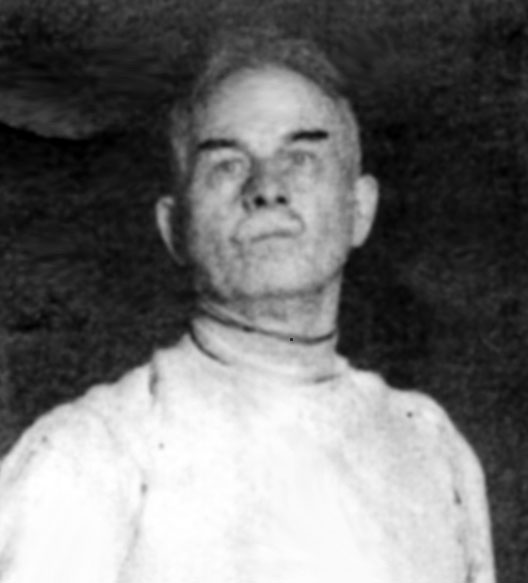 Herbert Charles Sanborn was born in Massachusetts in 1873, the same year that Cornelius Vanderbilt
promised $500 thousand to Bishop McTyeire for funding the start of Vanderbilt University.
After undergraduate work at Boston University, all the while considering a career in professional
baseball (Pate, 2005), Sanborn earned a master’s degree in philosophy at Tufts, taught for a few
years, and became a high school principal.
Herbert Charles Sanborn was born in Massachusetts in 1873, the same year that Cornelius Vanderbilt
promised $500 thousand to Bishop McTyeire for funding the start of Vanderbilt University.
After undergraduate work at Boston University, all the while considering a career in professional
baseball (Pate, 2005), Sanborn earned a master’s degree in philosophy at Tufts, taught for a few
years, and became a high school principal.
A fellowship given in 1901 permitted graduate work in Germany, a period of time Sanborn later
referred to as some of the best years of my life
(Sanborn, 1916, p. 2). He studied at four
universities there and received a PhD from Munich in 1908. His principal mentor was
philosopher-psychologist Theodore Lipps, a major figure in the Act Psychology movement (Boring, 1950).
Sanborn’s dissertation was on William James (Sanborn, 1909).
After two years as a professor in the department of philosophy and psychology at Washington College,
Sanborn moved to Vanderbilt as Associate Professor, where he was sole member of the Department
of Philosophy for over ten years. The 1915 Vanderbilt Bulletin shows that Sanborn's
philosophy curriculum started with two terms of psychology: "A general view of mental processes
and mental development ... [as introduction to] the fundamental principles of introspection and
mental analysis ... [including] psycho-physical analysis; sensation; association; memory; [etc.]
Lectures, textbooks, and experimental work." The topics of Logic, History of Philosophy, Ethics,
and Esthetics were covered in later terms.
Sanborn was elected a member of the Southern Association (now Society) of Philosophy and Psychology
(SSPP) in 1911. An effort was made later to absorb the Society into the American Psychological
Association (APA). This effort, supported incidentally by Joseph Peterson, then chair of Peabody Psychology,
was resisted by Sanborn who complained that the APA was "limited to scientific methodology"
(personal papers at Vanderbilt, Bin 19 #11).
Norman Munn, who later joined Sanborn in the Department of Philosophy and Psychology,
said that Sanborn did not want the staff or student enrollment in psychology to get ahead of
that in philosophy
and disparaged, albeit with good nature, the ability of psychologists
‘to prove anything’
(Munn, 1980, p. 99). But Sanborn's view of the
philosophy-psychology relationship
was deeper than that. He liked the statement, which he said was a
paraphrase of Kant that Philosophy without Psychology is empty, Psychology without Philosophy is
blind
.
[For more, see Sanborn (1950, 1957)]. In 1922 Sanborn was elected President of SSPP and later named
its first life member.
Psychology course offerings expanded in 1925 with the hiring of John M. Fletcher,
who had received his PhD in Psychology at Clark University. Fletcher was the first to have the
title of Professor of Psychology, but he was hired on a part-time basis, apparently splitting
time with the Medical School where he taught a course in Medical Psychology
.
Two new courses were: Social Psychology and, for the first time, a laboratory course, Experimental
Psychology. Details of the experiments demonstrated are hard to find but at least one letter
written to the administration requested new space, electrical wires to be connected with
recording devices
, and six stop watches [sic]
.
Despite Sanborn's disdain for Behaviorism - in his time the dominant perspective in American
psychology - he was not immune to empirical research. He published observational studies on
unlearned behaviors in songbirds, raising canaries with and without exposure to their own
species. For this he established his own aviary (on his farm) which at one time had as many
as five hundred canaries. When his farm had an epidemic of septic fever he sought help, and
came across the work of Robert Stroud (later made famous as "The Birdman of Alcatraz").
Their correspondence eventually led to Sanborn editing Stroud's authoritative "Diseases
of Canaries".
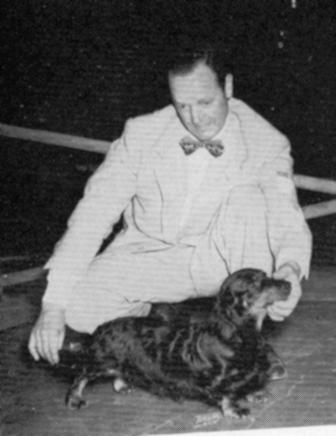 In due course Sanborn's farm, located in Brentwood Tennessee and named "Isartal" after the valley
of the Iser river in Bavaria, housed goats, rabbits, chickens, canaries, and turkeys. The farm
also had dachshunds, which he came to breed and
show. This experience led to the writing of "The Dachshund or Teckel: A Complete Treatise on the
history, Breeding, Training, Care, and Management; With Chapters on Diseases and their Treatment."
(Sanborn, 1955)
In due course Sanborn's farm, located in Brentwood Tennessee and named "Isartal" after the valley
of the Iser river in Bavaria, housed goats, rabbits, chickens, canaries, and turkeys. The farm
also had dachshunds, which he came to breed and
show. This experience led to the writing of "The Dachshund or Teckel: A Complete Treatise on the
history, Breeding, Training, Care, and Management; With Chapters on Diseases and their Treatment."
(Sanborn, 1955)
Lyle Lanier
According to Conkin (1985), Franklin Paschal was hired as Dean and helped to develop a new
program in Psychology
(p. 245). It is unclear whether this move was forced on Sanborn, but
in any case Lyle Lanier was hired in 1929 and the department was renamed the Department
of Philosophy and Psychology. Conkin later remarked that in 1936 Lanier and Sanborn
remained an odd couple
(p. 359).
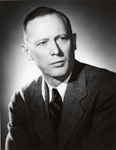 Lyle Lanier received his BA from Vanderbilt in 1923, then did graduate work at Peabody, where he
worked with John Peterson, receiving his PhD in 1926. After appointments at New York University
and Vassar, Lanier moved to Vanderbilt.
He stayed for nine years and despite being productive (and being elected to the
Society of Experimental Psychologists), he was not promoted. He was hired at Vassar and
next year elected President of SPSS. Lanier eventually moved to the University of Illinois,
where he served as department
head, then college dean, and Provost. After retirement Lanier served as director of
administrative affairs and educational statistics on the American Council of Education.
Lyle Lanier received his BA from Vanderbilt in 1923, then did graduate work at Peabody, where he
worked with John Peterson, receiving his PhD in 1926. After appointments at New York University
and Vassar, Lanier moved to Vanderbilt.
He stayed for nine years and despite being productive (and being elected to the
Society of Experimental Psychologists), he was not promoted. He was hired at Vassar and
next year elected President of SPSS. Lanier eventually moved to the University of Illinois,
where he served as department
head, then college dean, and Provost. After retirement Lanier served as director of
administrative affairs and educational statistics on the American Council of Education.
While at Vanderbilt Lanier
was one of twelve members of the Agrarians. This was a socially critical offshoot of the Fugitives,
which included William Penn Warren and Allen Tate. Lanier’s chapter in the Agrarian
manifesto
I’ll Take my Stand, was critical of the growth of power of large corporations.
Norman Munn
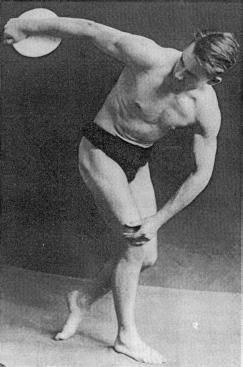 Norman Munn was Lyle Lanier's replacement. Born in Australia in 1902, Norman Munn came to Springfield
College, Massachusetts, at age 21 in order to study
physical education.
He had not completed high school.
Intending a career in physical conditioning, Munn was instead turned onto academics. He read John
Watson’s
treatise on Behaviorism, and decided to do graduate work in Psychology.
Norman Munn was Lyle Lanier's replacement. Born in Australia in 1902, Norman Munn came to Springfield
College, Massachusetts, at age 21 in order to study
physical education.
He had not completed high school.
Intending a career in physical conditioning, Munn was instead turned onto academics. He read John
Watson’s
treatise on Behaviorism, and decided to do graduate work in Psychology.
Clark University accepted him as a probationary student, and there he studied with Walter Hunter and
Carl Murchison.
His doctoral thesis was on form discrimination in chickens with results he interpreted to be against
the then new
gestalt perspective. The thesis was completed after he moved to the University of Pittsburgh as an
Assistant Professor in 1929.
He developed many projects at Clark and Pitt, including research on color vision in the rat and
A Manual of General Experimental Psychology and a Handbook of Psychological Research
on the Rat, which eventually became the authoritative, must-have, handbook used in rat
labs across the states.
In 1938 a full professorship opened at Vassar. Both Lanier and Munn applied; Lanier received the
offer, took the position, and recommended Munn as his replacement at Vanderbilt. According to Munn's memoirs:
The greater prestige of a full professorship at such a noted university was inducement enough
(Munn, 1980, p.97) and he took the position.
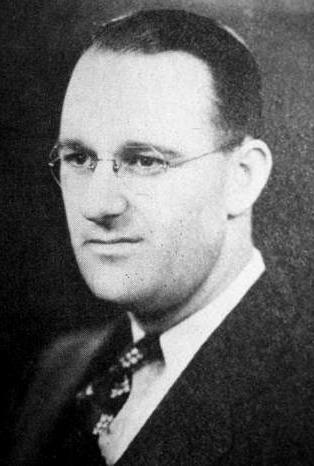 At first Munn's teaching load was so heavy that he felt he had no time for writing and research.
As his courses increased in popularity he asked Sanborn for additional staff. But Sanborn
At first Munn's teaching load was so heavy that he felt he had no time for writing and research.
As his courses increased in popularity he asked Sanborn for additional staff. But Sanborn
attributed the increased enrollment to my 'cheapening of psychology' and refused to ask
for an additional man unless he could also have an increase in philosophy
(Munn, 1980, p. 100).
Munn approached the Chancellor directly, who agreed to hire Meredith Crawford.
Crawford, a son of a Peabody colleague, had a PhD from Columbia and had worked with Robert
Yerkes at Yale. Munn then returned to the lab, examining learning in tadpoles and mealworms, and
perception of emotion in undergraduates. He also began work on an introductory text which eventually
became one of the most widely adopted.
Munn became chair of the department after Sanborn retired in 1943, when the number of psychologists
out-numbered the philosophers. In fact, in 1945 there was no full-time member of the philosophy staff.
Munn stayed on until Bowdoin College
offered a substantial salary increase for an appointment to begin in 1946.
He eventually returned to Australia where he retired.
Eugene Bugg and Meredith Crawford
Eugene Bugg is unique in this history in that he received his master's degree in 1927 from Vanderbilt
and, in various
ways, stayed on through the department's bifurcation, retiring from the Philosophy department in
the sixties. His master's thesis, approved by Sanborn and Fletcher, was "A Critical View of
Behaviorism". It's principal argument was that behaviorism is methodologically valid, but
metaphysically flawed (being materialistic and mechanistic). He was then hired as a research
assistant while he worked on his PhD - quite likely the first given by the department.
His dissertation, completed in 1933, was an empirical study of Consonance Theory (the favored
topic of Lipps, who had been Sanborn's mentor). It was supervised by Lyle Lanier, but Bugg gives
credit for research methodology to Sanborn. He then joined the department on a part-time
basis, offering courses in philosophy and psychology, eventually achieving full-time
status in the new Department of Philosophy and retiring in 1966.
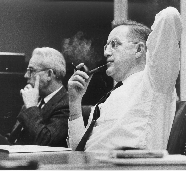 Meredith Crawford was the last faculty added before Sanborn retired.
He was no stranger to Nashville, being a son of a Peabody faculty member, and a graduate of Vanderbilt.
He had a PhD from Columbia followed by five years of research on social behavior of chimpanzees
with Robert Yerkes at Yale's Laboratory of Primate Biology.
He was hired at Vanderbilt as Assistant
Professor in 1941 but did not stay long. During the war (WWII) he
served in the military publishing research on training.
After returning to Vanderbilt he was named Dean of the Junior College in 1946. In 1950 he
became the
founding director of the Human Resources Research Organization (HumRRO), which
was based at George Washington University and contracted with
the Army to do research on psychological warfare, leadership, training, and morale.
According to some sources, HumRRo was the idea of Harry Harlow, who no doubt played a role in
naming Crawford director. He later received the Decoration for Distinguished Civilian
Service for this work.
Before his death in 2002 Crawford was for several years the administrative accreditation
officer, and Treasurer,
of the APA.
Meredith Crawford was the last faculty added before Sanborn retired.
He was no stranger to Nashville, being a son of a Peabody faculty member, and a graduate of Vanderbilt.
He had a PhD from Columbia followed by five years of research on social behavior of chimpanzees
with Robert Yerkes at Yale's Laboratory of Primate Biology.
He was hired at Vanderbilt as Assistant
Professor in 1941 but did not stay long. During the war (WWII) he
served in the military publishing research on training.
After returning to Vanderbilt he was named Dean of the Junior College in 1946. In 1950 he
became the
founding director of the Human Resources Research Organization (HumRRO), which
was based at George Washington University and contracted with
the Army to do research on psychological warfare, leadership, training, and morale.
According to some sources, HumRRo was the idea of Harry Harlow, who no doubt played a role in
naming Crawford director. He later received the Decoration for Distinguished Civilian
Service for this work.
Before his death in 2002 Crawford was for several years the administrative accreditation
officer, and Treasurer,
of the APA.
Sanborn Retires
In 1940 Vanderbilt's Chancellor asked the Board of Trust to pass a new faculty policy,
forcing retirement at age 65. Sanborn, then 67, was convinced, with ample reason,
that the regulation was aimed at him. Conkin (1985) has described Sanborn as a brilliant scholar
who often conflicted with the administration, long a thorn in [Chancellor] Kirkland's side
.
Sanborn fought the regulation, was unhappy with the retirement amount, and tried unsuccessfully
to get AAUP assistance.
He was able to stall for two years, but retired in 1942 at age 69.
Sanborn remained active for 25 years, running his farm, coaching the Vanderbilt fencing team
(into the fifties), becoming politically active, and continuing to write.
Unfortunately, as Pate (2005) says, there is a darker side
to this story.
For Sanborn was an active anti-Semite and a racist. In 1955 he self-published a collection of
pamphlets titled The International Conspiracy
which promote, among other things, the view
that Jewish banking interests were conspiring to gain world domination by acquiring secret control
of American bankng. And he worked against the Civil Rights movement in the 1960's. This darker side of
Sanborn's history is ably and thoroughly treated in two excellent papers, one by Debra Pate
(Herbert Charles Sanborn: What a Piece of Work is Man!
Paper presented at the annual
meeting of the Southeastern Psychological Association, 2005), and another
by Andrew Winston (Saving Civilization: Herbert Sanborn, the 'International Jewish Conspiracy'
and the Psychology of Race
, undated).
In 1955, at age 82, Sanborn ran for Tennessee State Senate as a candidate of the Conservative party.
He was defeated by Richard Fulton, who later became mayor of Nashville,
and then Fifth District Representative in the U. S. House. Sanborn died in 1967 at age 94.
Next Section: 1943-1960 The Ericksen Era
 Herbert Charles Sanborn was born in Massachusetts in 1873, the same year that Cornelius Vanderbilt
promised $500 thousand to Bishop McTyeire for funding the start of Vanderbilt University.
After undergraduate work at Boston University, all the while considering a career in professional
baseball (Pate, 2005), Sanborn earned a master’s degree in philosophy at Tufts, taught for a few
years, and became a high school principal.
Herbert Charles Sanborn was born in Massachusetts in 1873, the same year that Cornelius Vanderbilt
promised $500 thousand to Bishop McTyeire for funding the start of Vanderbilt University.
After undergraduate work at Boston University, all the while considering a career in professional
baseball (Pate, 2005), Sanborn earned a master’s degree in philosophy at Tufts, taught for a few
years, and became a high school principal.
 In due course Sanborn's farm, located in Brentwood Tennessee and named "Isartal" after the valley
of the Iser river in Bavaria, housed goats, rabbits, chickens, canaries, and turkeys. The farm
also had dachshunds, which he came to breed and
show. This experience led to the writing of "The Dachshund or Teckel: A Complete Treatise on the
history, Breeding, Training, Care, and Management; With Chapters on Diseases and their Treatment."
(Sanborn, 1955)
In due course Sanborn's farm, located in Brentwood Tennessee and named "Isartal" after the valley
of the Iser river in Bavaria, housed goats, rabbits, chickens, canaries, and turkeys. The farm
also had dachshunds, which he came to breed and
show. This experience led to the writing of "The Dachshund or Teckel: A Complete Treatise on the
history, Breeding, Training, Care, and Management; With Chapters on Diseases and their Treatment."
(Sanborn, 1955)
 Lyle Lanier received his BA from Vanderbilt in 1923, then did graduate work at Peabody, where he
worked with John Peterson, receiving his PhD in 1926. After appointments at New York University
and Vassar, Lanier moved to Vanderbilt.
He stayed for nine years and despite being productive (and being elected to the
Society of Experimental Psychologists), he was not promoted. He was hired at Vassar and
next year elected President of SPSS. Lanier eventually moved to the University of Illinois,
where he served as department
head, then college dean, and Provost. After retirement Lanier served as director of
administrative affairs and educational statistics on the American Council of Education.
Lyle Lanier received his BA from Vanderbilt in 1923, then did graduate work at Peabody, where he
worked with John Peterson, receiving his PhD in 1926. After appointments at New York University
and Vassar, Lanier moved to Vanderbilt.
He stayed for nine years and despite being productive (and being elected to the
Society of Experimental Psychologists), he was not promoted. He was hired at Vassar and
next year elected President of SPSS. Lanier eventually moved to the University of Illinois,
where he served as department
head, then college dean, and Provost. After retirement Lanier served as director of
administrative affairs and educational statistics on the American Council of Education.
 Norman Munn was Lyle Lanier's replacement. Born in Australia in 1902, Norman Munn came to Springfield
College, Massachusetts, at age 21 in order to study
physical education.
He had not completed high school.
Intending a career in physical conditioning, Munn was instead turned onto academics. He read John
Watson’s
treatise on Behaviorism, and decided to do graduate work in Psychology.
Norman Munn was Lyle Lanier's replacement. Born in Australia in 1902, Norman Munn came to Springfield
College, Massachusetts, at age 21 in order to study
physical education.
He had not completed high school.
Intending a career in physical conditioning, Munn was instead turned onto academics. He read John
Watson’s
treatise on Behaviorism, and decided to do graduate work in Psychology.
 At first Munn's teaching load was so heavy that he felt he had no time for writing and research.
As his courses increased in popularity he asked Sanborn for additional staff. But Sanborn
At first Munn's teaching load was so heavy that he felt he had no time for writing and research.
As his courses increased in popularity he asked Sanborn for additional staff. But Sanborn
 Meredith Crawford was the last faculty added before Sanborn retired.
He was no stranger to Nashville, being a son of a Peabody faculty member, and a graduate of Vanderbilt.
He had a PhD from Columbia followed by five years of research on social behavior of chimpanzees
with Robert Yerkes at Yale's Laboratory of Primate Biology.
He was hired at Vanderbilt as Assistant
Professor in 1941 but did not stay long. During the war (WWII) he
served in the military publishing research on training.
After returning to Vanderbilt he was named Dean of the Junior College in 1946. In 1950 he
became the
founding director of the Human Resources Research Organization (HumRRO), which
was based at George Washington University and contracted with
the Army to do research on psychological warfare, leadership, training, and morale.
According to some sources, HumRRo was the idea of Harry Harlow, who no doubt played a role in
naming Crawford director. He later received the Decoration for Distinguished Civilian
Service for this work.
Before his death in 2002 Crawford was for several years the administrative accreditation
officer, and Treasurer,
of the APA.
Meredith Crawford was the last faculty added before Sanborn retired.
He was no stranger to Nashville, being a son of a Peabody faculty member, and a graduate of Vanderbilt.
He had a PhD from Columbia followed by five years of research on social behavior of chimpanzees
with Robert Yerkes at Yale's Laboratory of Primate Biology.
He was hired at Vanderbilt as Assistant
Professor in 1941 but did not stay long. During the war (WWII) he
served in the military publishing research on training.
After returning to Vanderbilt he was named Dean of the Junior College in 1946. In 1950 he
became the
founding director of the Human Resources Research Organization (HumRRO), which
was based at George Washington University and contracted with
the Army to do research on psychological warfare, leadership, training, and morale.
According to some sources, HumRRo was the idea of Harry Harlow, who no doubt played a role in
naming Crawford director. He later received the Decoration for Distinguished Civilian
Service for this work.
Before his death in 2002 Crawford was for several years the administrative accreditation
officer, and Treasurer,
of the APA.